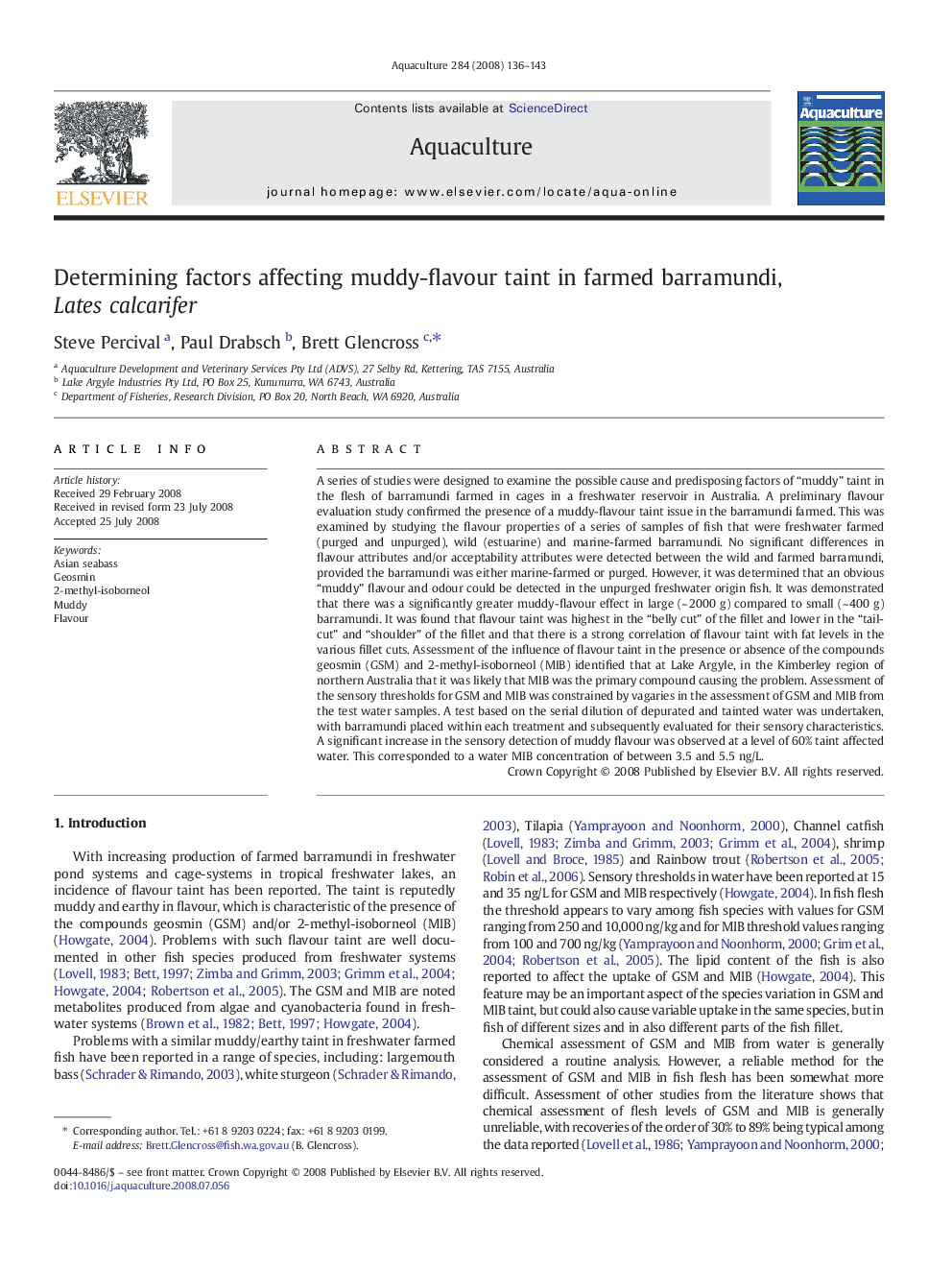| کد مقاله | کد نشریه | سال انتشار | مقاله انگلیسی | نسخه تمام متن |
|---|---|---|---|---|
| 2424441 | 1552957 | 2008 | 8 صفحه PDF | دانلود رایگان |

A series of studies were designed to examine the possible cause and predisposing factors of “muddy” taint in the flesh of barramundi farmed in cages in a freshwater reservoir in Australia. A preliminary flavour evaluation study confirmed the presence of a muddy-flavour taint issue in the barramundi farmed. This was examined by studying the flavour properties of a series of samples of fish that were freshwater farmed (purged and unpurged), wild (estuarine) and marine-farmed barramundi. No significant differences in flavour attributes and/or acceptability attributes were detected between the wild and farmed barramundi, provided the barramundi was either marine-farmed or purged. However, it was determined that an obvious “muddy” flavour and odour could be detected in the unpurged freshwater origin fish. It was demonstrated that there was a significantly greater muddy-flavour effect in large (~ 2000 g) compared to small (~ 400 g) barramundi. It was found that flavour taint was highest in the “belly cut” of the fillet and lower in the “tail-cut” and “shoulder” of the fillet and that there is a strong correlation of flavour taint with fat levels in the various fillet cuts. Assessment of the influence of flavour taint in the presence or absence of the compounds geosmin (GSM) and 2-methyl-isoborneol (MIB) identified that at Lake Argyle, in the Kimberley region of northern Australia that it was likely that MIB was the primary compound causing the problem. Assessment of the sensory thresholds for GSM and MIB was constrained by vagaries in the assessment of GSM and MIB from the test water samples. A test based on the serial dilution of depurated and tainted water was undertaken, with barramundi placed within each treatment and subsequently evaluated for their sensory characteristics. A significant increase in the sensory detection of muddy flavour was observed at a level of 60% taint affected water. This corresponded to a water MIB concentration of between 3.5 and 5.5 ng/L.
Journal: Aquaculture - Volume 284, Issues 1–4, 1 November 2008, Pages 136–143